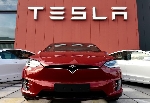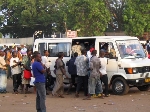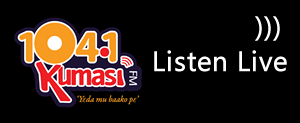Ericsson year in review 2020
 Ericsson
Ericsson
2020 may be primarily remembered in history for the global impact of the COVID-19 pandemic. Billions of people have suffered bereavement, illness, hardship or measures to contain the spread of the new coronavirus strain.
Ericsson actions this year were aimed at protecting the health and safety of employees, customers and stakeholders. The pandemic also highlighted the crucial need for connectivity. While working strictly to local pandemic restrictions, Ericsson continued to deploy 5G globally, cemented its 5G leadership and completed the company turnaround.
January: European momentum and the World Economic Forum
The year began with the first of what would be many live 5G milestones, when TIM and Ericsson, together with Qualcomm, reached a new European record for 5G speed. The partners successfully completed Europe’s first connection overcoming the 2Gbps speed barrier on a 5G live commercial network.
5G robotics was on show for world leaders at the World Economic Forum in Davos, Switzerland, as Ericsson teamed up with 5G partners ABB and Swisscom to highlight the value of adopting Industry 4.0 solutions to global political and business leaders.
In France, Ericsson announced the establishment of a new R&D site to accelerate 5G momentum in Europe. Opened in early 2020, the site focused initially on 5G software development and security, benefitting the global 5G ecosystem, and leveraging on Ericsson’s collaboration with French customers.
February: Portfolio strengthens as COVID-19 dominates
With the initial outbreak of the novel coronavirus and the health and safety of employees, customers and other stakeholders as the company’s top priority, Ericsson took the proactive decision to withdraw from MWC Barcelona 2020 in early February.
Despite lacking its usual physical presence at the largest annual event in the telecom industry – which would be later cancelled – Ericsson moved forward with its plans to bolster its commercial 5G portfolio, announcing four new additions to its 5G platform, new additions to the Ericsson Radio Dot System portfolio to further strengthen the product suite for indoor 5G networks, and the commercial availability of Ericsson Spectrum Sharing.
Ericsson Spectrum Sharing went on to win top honors at the GSMA’s GLOMO Awards, scooping the Overall Mobile Technology and Best Mobile Technology Breakthrough awards.
March: Ericsson 5G production in U.S. underway
As the coronavirus continued its spread across the world, we looked at how Ericsson employees supported efforts in China to combat the virus. Local Ericsson teams moved swiftly into action to deliver mission-critical communications infrastructure to where it was needed most – the country’s permanent and makeshift hospitals.
In the US, Ericsson’s first smart factory in the country went operational and produced its first 5G base stations to enable rapid 5G deployments. The factory is one of the most advanced manufacturing facilities in the industry, and its first product was the millimeter-wave Street Macro solution, which is key to Ericsson’s 5G portfolio for its North American customers.
With the global pandemic putting the need for fast, reliable and secure connectivity in focus, a host of operators around the world ramped up their 5G ambitions. Ericsson was selected by Taiwanese communications service provider Far EasTone (FET) as its 5G Radio Access Network (RAN) vendor. The deal spans 5G RAN across FET’s spectrum assets in the low, mid and high bands using Ericsson Radio System products and solutions.
Also in the region, Chunghwa Telecom selected Ericsson to provide the 5G platform to support its future network, and deploy a non-standalone (NSA) New Radio (NR) network on mid and high-frequency bands. In Hong Kong, Ericsson and SmarTone agreed to a five-year contract for the deployment of 5G. Ericsson is the sole supplier of SmarTone’s 4G network and will continue as their sole 5G vendor – extending the companies’ 28 years of partnership.
Ericsson and Telenor also switched on Norway’s first commercial 5G services in the city of Trondheim. The achievement was part of an ongoing project to build and modernize Telenor’s 5G RAN and power the country’s digital future.
April: Connectivity in focus
In April, we looked further at Wuhan, China, and how Ericsson engineers working tirelessly on the frontline of the emerging crisis to deliver critical communications infrastructure across the province.
The global pandemic continued to highlight the role of 4G and 5G networks as critical national infrastructure. In Europe, this momentum was seen in a host of announced Ericsson deals with service providers.
Among them was Erillisverkot Group, the state-run body responsible for national communications networks for public authorities, emergency services and other critical services in Finland. It selected Ericsson to provide 5G next-generation core network products and solutions for its mission critical broadband network.
VodafoneZiggo, the leading Dutch communications service provider, announced the launch of 5G across the Netherlands with Ericsson Spectrum Sharing and 5G Core solutions at the heart of its rollout. In the UK, British Telecom (BT) and Ericsson signed a deal to deploy Ericsson’s dual-mode 5G Core, a key component in BT’s move to a single converged IP network.
In the US, Ericsson and U.S. Cellular began boosting mobile broadband capacity to customers in parts of Wisconsin, Iowa, Illinois, New Hampshire, Maine and North Carolina, due to increased demand for data usage during the COVID-19 pandemic.
May: Ekholm highlights the role of connectivity
Speaking at the kickoff of a new online event series – Ericsson UnBoxed Office – Ericsson President and CEO, Börje Ekholm, highlighted the importance of connectivity during times of crisis and the opportunity to rethink the role of networks in the future.
In the US, Ericsson worked with T-Mobile and ecosystem partners to enhance the quality of connectivity and achieved several important ‘world’s first’ milestones for standalone architecture (SA) 5G. “Powerful and reliable wireless networks are more important than ever, and these milestones mark a huge step forward for the entire wireless ecosystem,” said Neville Ray, President of Technology at T-Mobile.
In Europe, the continent’s largest 5G research network, powered by Ericsson 5G products and solutions, went live in Aachen Germany. Comprising multiple partners, the 5G Industry Campus Europe aims to develop and implement applications and solutions for digitized and networked production to benefit 5G production across Europe and beyond.
May also marked the 20-year anniversary of Ericsson Response, the company’s humanitarian relief program that focuses on providing connectivity to humanitarian workers and populations in affected areas during crises.
June: A strengthened 5G position, awards and new solutions
June saw a host of new 5G contracts and rollouts. Ericsson strengthened its position in China by winning 5G contracts in 2020 with all three major operators.
Telefónica Deutschland, which operates under the O2 brand in Germany, selected Ericsson 5G Core for its network of the future, Bell Canada selected Ericsson as a 5G partner in RAN technology to support its nationwide 5G mobile and fixed wireless access deployment. Ericsson also continued to rollout 5G in the UK with an extended partnership with O2 UK.
The June edition of the Ericsson Mobility Report took an incisive look at the role of networks and digital infrastructure in keeping societies running, and families connected during the COVID-19 pandemic.
Ericsson announced new AIR solutions to accelerate 5G mid-band deployments, meaning communications service providers can now deploy mid-band 5G networks faster and on a wider scale without adding to their site footprint.
The first half of the year wrapped up with Ericsson scooping Red Dot Design Awards for Ericsson Radio System products.
July: Africa benefits from 5G … U.S customers receive U.S. made Ericsson 5G products
With the COVID-19 pandemic still very much in focus, Ericsson also supported adjacent industries. As the demand for ventilators increased, Getinge, a global supplier of mechanical ventilators, was faced with the challenge of ramping its production 160 percent during 2020. With R&D and supply teams based in the same region of Sweden, Getinge reached out to Ericsson’s local Product Development Unit Transport for help.
Commercial 5G launches continued to gain speed around the world. In Taiwan, both Chunghwa Telecom and Far EasTone launched their commercial 5G networks, with 5G RAN and Core solutions provided by Ericsson.
In South Africa, communications service provider MTN went live with Ericsson-powered commercial 5G in the cities of Bloemfontein and Port Elizabeth. In the US, Verizon became the country’s first communications service provider to receive a 5G base station manufactured at Ericsson’s new 5G production factory in Texas.
New Ericsson software was also released, allowing communications service providers to tap the full potential of 5G New Radio (NR) technology with the commercial availability of Ericsson Standalone 5G NR software for 5G mid- and low bands.
August: Ericsson tops 100 unique 5G customer milestone
August saw Ericsson reach a significant 5G milestone when the company secured its 100th commercial 5G agreement or contract with unique communications service providers.
5G deployments continued with Ericsson and Telekom Slovenije, launching the first commercial 5G network in Slovenia. Claro Brasil also brought the first 5G network to Latin America using Ericsson Spectrum Sharing, initially rolling out services across 12 areas in Brazil.
Forwarding the company’s sustainability and corporate responsibility ambitions, Ericsson joined The Pathways Coalition, a group of innovative companies representing the infrastructure, utilities, transportation and retail sectors. The ambition is to accelerate decarbonization of heavy transport and reach the objective of zero CO2 emissions by year 2050 or earlier, in line with The Paris Agreement.
September: More 5G momentum in Europe … Ericsson acquires Cradlepoint
September saw more operators launching their commercial 5G services. In Denmark, rapid deployment by Ericsson field professionals enabled Danish communications service provider, TDC, to beat its nationwide 5G network roll out timeline and launch commercial 5G across most of Denmark on September 7.
In Spain, Ericsson helped both Orange and Telefónica Spain to launch commercial 5G services. Ericsson and Three Ireland combined to launch 5G in Ireland, bringing comprehensive 5G coverage and network capacity.
Ericsson teamed up with Rostelecom and Tele2 to demonstrate 5G capabilities for COVID health monitoring by deploying a pilot 5G network at the Digital Industry of Industrial Russia (CIPR) conference to help monitor the health of visitors. The pilot 5G service enabled remote health monitoring of CIPR-2020 visitors including temperature checks, use of personal protective equipment (e.g. masks), and extent of social distancing.
Big news followed with the announcement of Ericsson’s agreement to acquire Cradlepoint, the US-based market leader in Wireless Edge WAN 4G and 5G Enterprise solutions. The investment is key to Ericsson’s ongoing strategy of capturing market share in the rapidly expanding 5G Enterprise space. Cradlepoint complements Ericsson’s existing 5G Enterprise portfolio which includes Dedicated Networks and a global IoT platform. The combined offering will create valuable new revenue streams for customers by supporting full 5G-enabled services for enterprise, and boost returns on investments in the network.
October: A big month for 5G Core
October saw numerous wins for Ericsson in the 5G Core space. Proximus, the Belgian communications service provider, selected Ericsson to implement a new 5G Core network on its cloud infrastructure. The cloud-native solution is based on Ericsson’s dual-mode 5G Core, which will also be used for the renewal of the 4G network.
In neighboring Netherlands, Dutch service provider KPN chose Ericsson as its mobile core network vendor. Under the five-year agreement, Ericsson will deploy dual-mode 5G Core software with full support services, including an accompanying systems integration program with third-line support services.
To the south, POST Luxembourg strengthened its partnership with Ericsson with a multiyear deal to deploy 5G Core and 5G Radio Access Network (RAN) in Luxembourg. POST went live with Ericsson-powered 5G on October 16.
Confirming Ericsson’s strong stance on sustainable business practices, the company was named one of the world’s most sustainable companies by the Wall Street Journal. Ericsson ranked #12 on the publications list of the 100 Most Sustainably Managed Companies in the World.
November: Company turnround completed
November saw another significant milestone in recent Ericsson history as senior company executives confirmed to Capital Markets Day 2020 attendees that the three-year company turnaround was complete - with restored profitability, organic growth and on-tracking financial target progress.
A series of contracts in Kenya, South Africa, Madagascar and Benin, among others, highlighted Ericsson’s growing footprint in Sub-Saharan Africa as communications service providers moved to strengthen their networks and cater to demand for enhanced mobile services.
In Europe, more service providers were forwarding their 5G agendas with Ericsson. Telia and Ericsson switched on Estonia’s first commercial 5G network, powered by Ericsson 5G technology including Ericsson Radio System products and solutions and using hardware produced in Estonia. In the Czech Republic, Ericsson and wholesale telecom infrastructure company, CETIN, signed a five-year contract to bring 5G to the nation.
The November 2020 Ericsson Mobility Report was released, estimating that by the end of this year, more than 1 billion people – 15 percent of the world’s population – will live in an area that has 5G coverage rolled out. In 2026, 60 percent of the world’s population will have access to 5G coverage, with 5G subscriptions forecast to reach 3.5 billion.
December: Ericsson closes a strong performance year
More 5G deals were unveiled including in Greece, where the company was selected by WIND Hellas as its mobile core network vendor for standalone and non-standalone 5G, as well as its BSS partner. Ericsson will deliver a powerful transformation to Wind Hellas’ existing 2G/3G/4G packet core and signaling infrastructure and enable them to deploy their first standalone 5G network.
In Slovakia, Ericsson was chosen by Slovak Telekom to deliver its 5G Radio Access Network and switch on 5G commercial services as of December 10, while Japan’s KDDI selected Ericsson to deploy cloud-native, dual-mode 5G Core, enabling the launch of 5G Standalone services in its network.
December also saw the publication of Ericsson ConsumerLab’s annual 10 Top Consumer Trends report and the unveiling of the 2020 Ericsson Innovation Awards winners.
December also highlighted our Ericsson solutions are boosting public safety networks across some of Europe’s remotest communities in the Faroe Islands, as well as showcasing how Ericsson innovation could bring mobile connectivity to the seas and change the marine industry as we know it - and how Ericsson network-on-a-drone innovation could transform emergency disaster response.
Ericsson and Singtel announced the acceleration of their 5G partnership in Singapore through the deployment of high-end 5G technology enabled by 5G New Radio (NR) Standalone and dual-mode 5G core network products and solutions.
As the year closes out, Ericsson has 122 commercial 5G agreement or contracts with unique communications service providers, 68 publicly announced 5G contracts, and are live with 77 5G networks across the globe in 40 countries.
Source: classfmonline.com
Trending Business

Fidelity Bank’s Edna Engmann highlights emotional intelligence as key to effective leadership at PMI Meeting
11:00
Transport ministry lacks legal basis to dictate fares – COPEC
08:55
Tesla sacks 10% of workforce
01:53
PURC fines ECG board members ₵5.8m for dumsor timetable breaches; company to pay ₵446m to Category B beneficiaries
01:34
Ghanaians to pay tax on foreign incomes
01:06
Kumasi Kejetia Market faces power cut over unpaid electricity bills
16:41
Fare hike: We’ve over-entertained gov’t’s reckless fuel price hikes – Drivers
02:11
Ghana fails to reach debt deal with international bondholders
10:52
Fare hike miscommunication creating confusion – Passengers Assoc.
10:59
I will abolish unnecessary taxes - Kyerematen to GUTA
10:50



